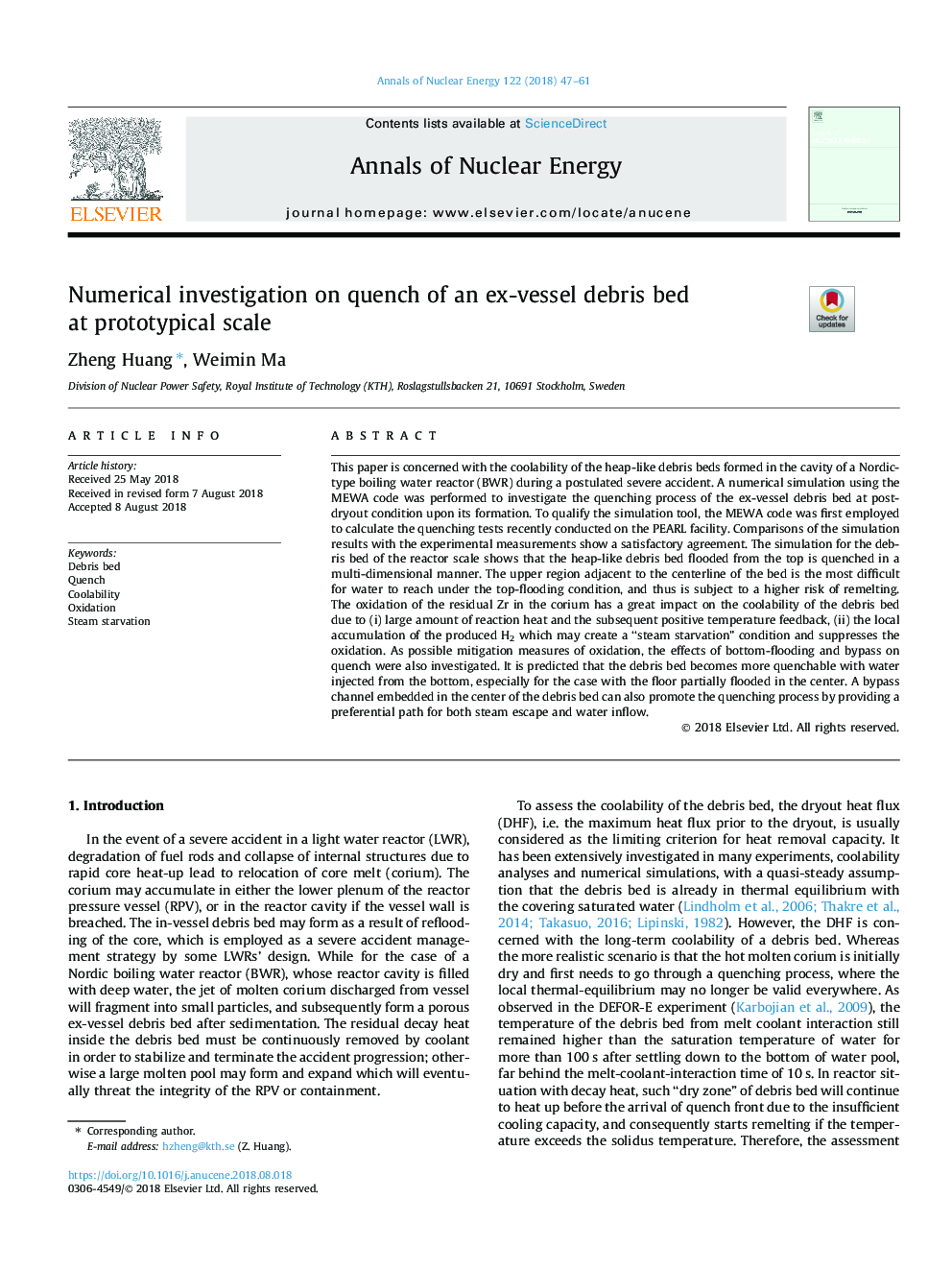| Article ID | Journal | Published Year | Pages | File Type |
|---|---|---|---|---|
| 10128837 | Annals of Nuclear Energy | 2018 | 15 Pages |
Abstract
This paper is concerned with the coolability of the heap-like debris beds formed in the cavity of a Nordic-type boiling water reactor (BWR) during a postulated severe accident. A numerical simulation using the MEWA code was performed to investigate the quenching process of the ex-vessel debris bed at post-dryout condition upon its formation. To qualify the simulation tool, the MEWA code was first employed to calculate the quenching tests recently conducted on the PEARL facility. Comparisons of the simulation results with the experimental measurements show a satisfactory agreement. The simulation for the debris bed of the reactor scale shows that the heap-like debris bed flooded from the top is quenched in a multi-dimensional manner. The upper region adjacent to the centerline of the bed is the most difficult for water to reach under the top-flooding condition, and thus is subject to a higher risk of remelting. The oxidation of the residual Zr in the corium has a great impact on the coolability of the debris bed due to (i) large amount of reaction heat and the subsequent positive temperature feedback, (ii) the local accumulation of the produced H2 which may create a “steam starvation” condition and suppresses the oxidation. As possible mitigation measures of oxidation, the effects of bottom-flooding and bypass on quench were also investigated. It is predicted that the debris bed becomes more quenchable with water injected from the bottom, especially for the case with the floor partially flooded in the center. A bypass channel embedded in the center of the debris bed can also promote the quenching process by providing a preferential path for both steam escape and water inflow.
Keywords
Related Topics
Physical Sciences and Engineering
Energy
Energy Engineering and Power Technology
Authors
Zheng Huang, Weimin Ma,
